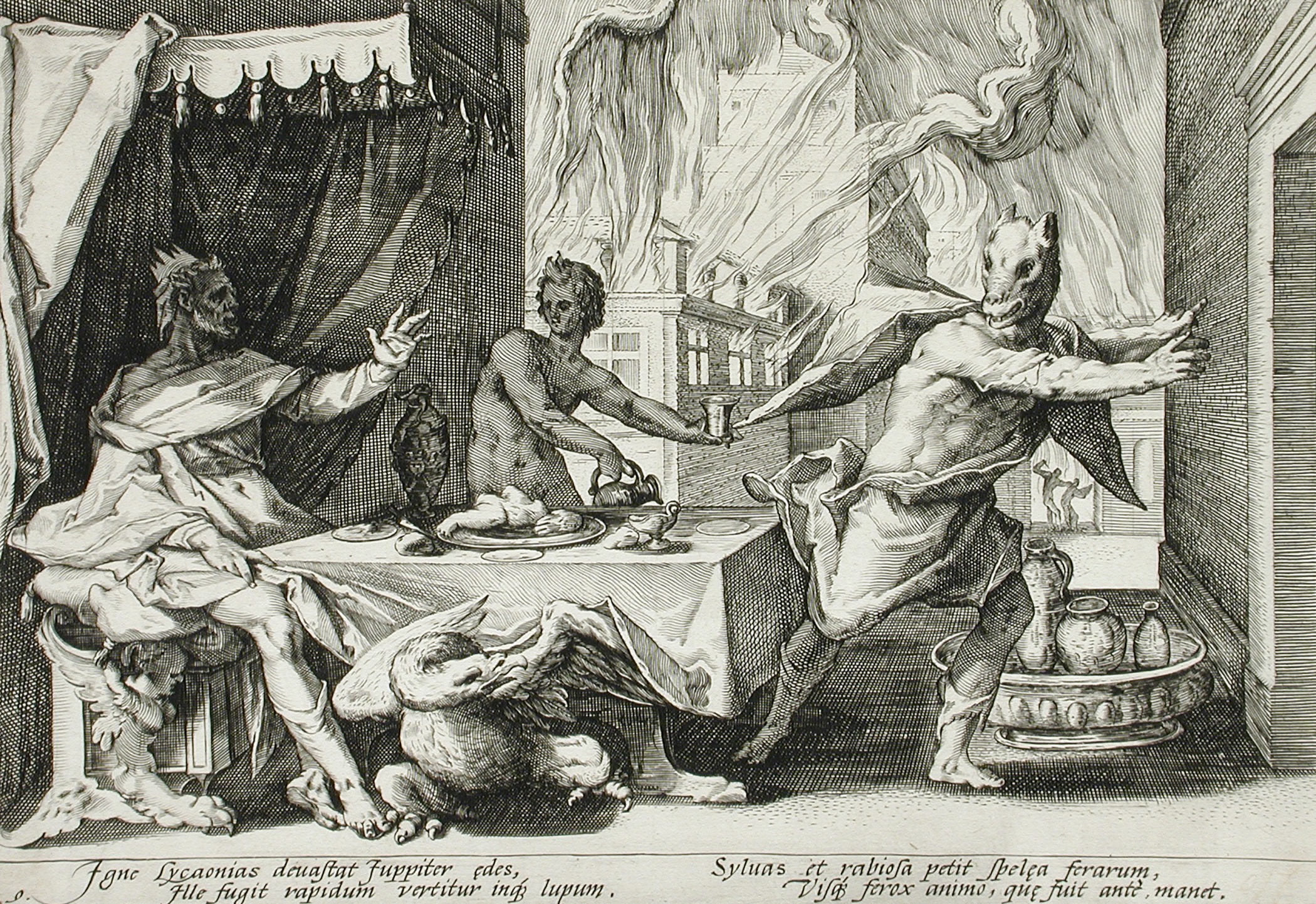I know, spooky, ain't it?
So, I went on and thought to myself: "Why is it that werewolves wear flannel and jeans?". Actually, it's a very good question. In fact, it's a good enough question for me to go on over to Wikipedia and a few other sites to find out the history of these magical, flea-bitten, feral, ferocious, fanged, fluffy freaks!
Alliteration is fun.
Let's begin.
While rarely showing up in actual historical context outside of witchcraft, the first mentions of a man-wolf monster shows up in classical antiquity, and there are mentions of men turning into wolves from Germanic paganism from around the same time. Like many cool monsters, there's mention of a man being turned into a wolf in the tale of Lycaon. And what's a Greek tale without the abusive father of the gods, Zeus?
Bad dog! Now you go outside!
Lycaon wanted to test if Zeus was really who he claimed to be. Being a genius, he cooked his son and fed him to Zeus. Zeus was like "Nah man, this is your son! BAM! You're a wolf now!" The moral of the story? Don't cook people and feed them to gods. Since gods know everything, they'll see it coming. In turn, they'll turn you into a man-eating beast as a show of "There, now you try and eat people. Have fun while I bring your son back from the dead! Let's see how happy he'll be once he wakes up on a plate in front of a shoddy-looking mascot!"
There's not much mention of man-wolves in the early medieval times, aside from some old tales from ancient Germanic tribes. Come the 15th and 16th centuries, and there were stories of witchcraft, paganism spreading wild, and even tales of cannibalism and people rising from the dead. One such tale comes from France, like all good stories involving exotic culinary adventures. A hermit known as Gilles Garnier was found guilty of witchcraft, cannibalism, and being a werewolf.
Not a very flattering picture, but it's the only one I could find.
During his trial, he said that a ghost gave him a magic potion. He wanted to ease his hunger by turning into a wolf. This didn't go over well with the court, as confessing that a ghost gave you a magic potion to turn you into a wolf-man to devour the flesh of human children wasn't a good idea, when even being accused of witchcraft would land you a spot on the burning stake. Needless to say, Gilles was burned at the stake. Surprisingly, the inquisition was busy or something, and local authorities were the ones to start the wolf barbecue. Gilles would be one of many to die at the hands of a "Werewolf Witch Trial". I'm inclined to believe that vampires, witches, werewolves and the like were just blanket terms for "Spooky people we need to burn" by the church.
Oh yeah, I should also mention that Werecats are also a thing. In Asia, Africa, and Pre-Colombian America, there were thought to be men and women who could change into leopards, lions, jaguars, tigers, and the like. Though, these were less taboo, as I guess cats are known to eat less people than wolves.
Ever since Bram Stoker's Dracula, wolves and vampires have had some sort of connection. As, in the book, Dracula demonstrates that he can communicate with animals (Such as wolves) and turn into animals (Such as wolves).
From then on, films like Werewolf of London and The Wolf Man have laid the ground rules for werewolves, and brought the idea of a wolf-man into pop culture. While Underworld and Twilight changed things up a bit, the basic formula has stayed the same. Moon good. Silver bad. Awoo.

No comments:
Post a Comment